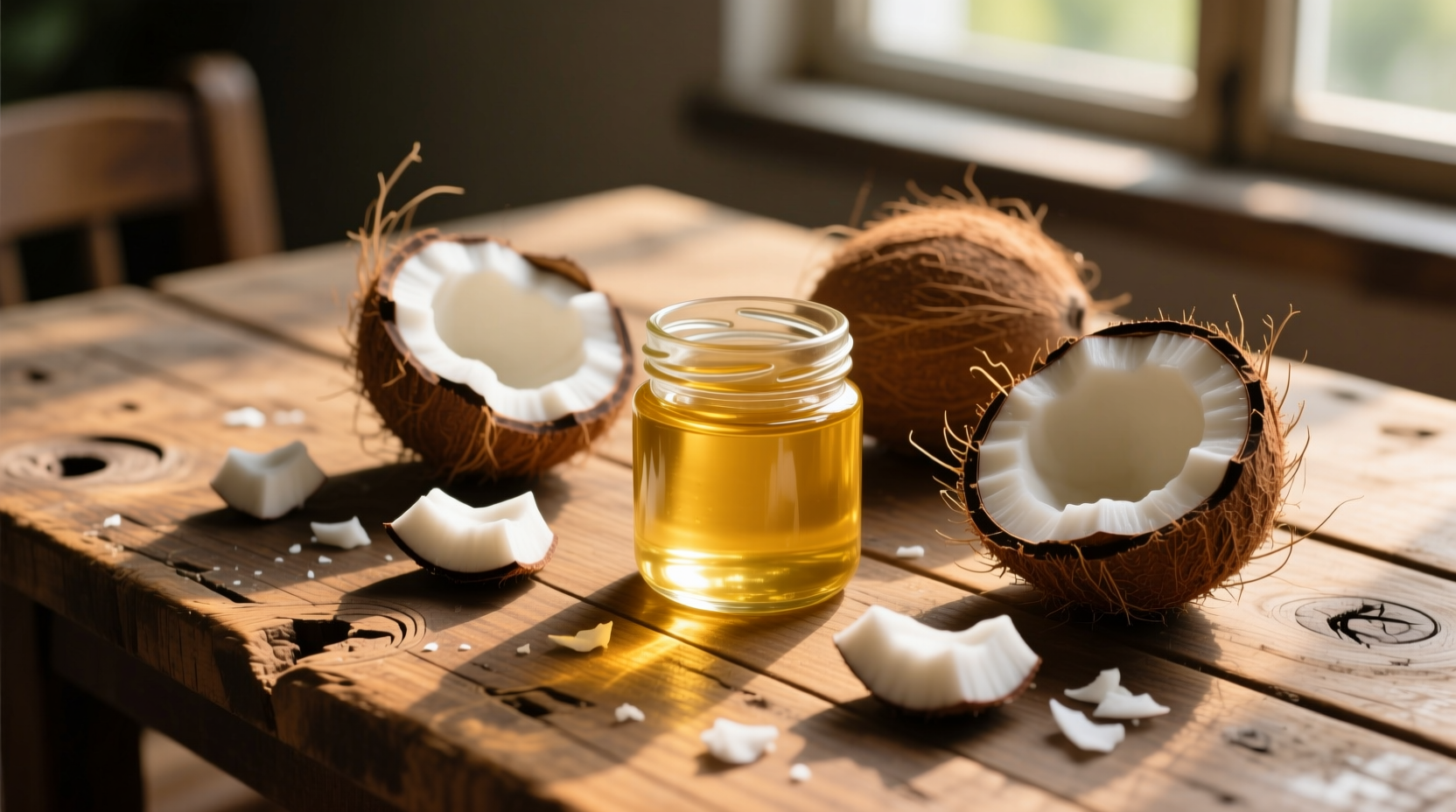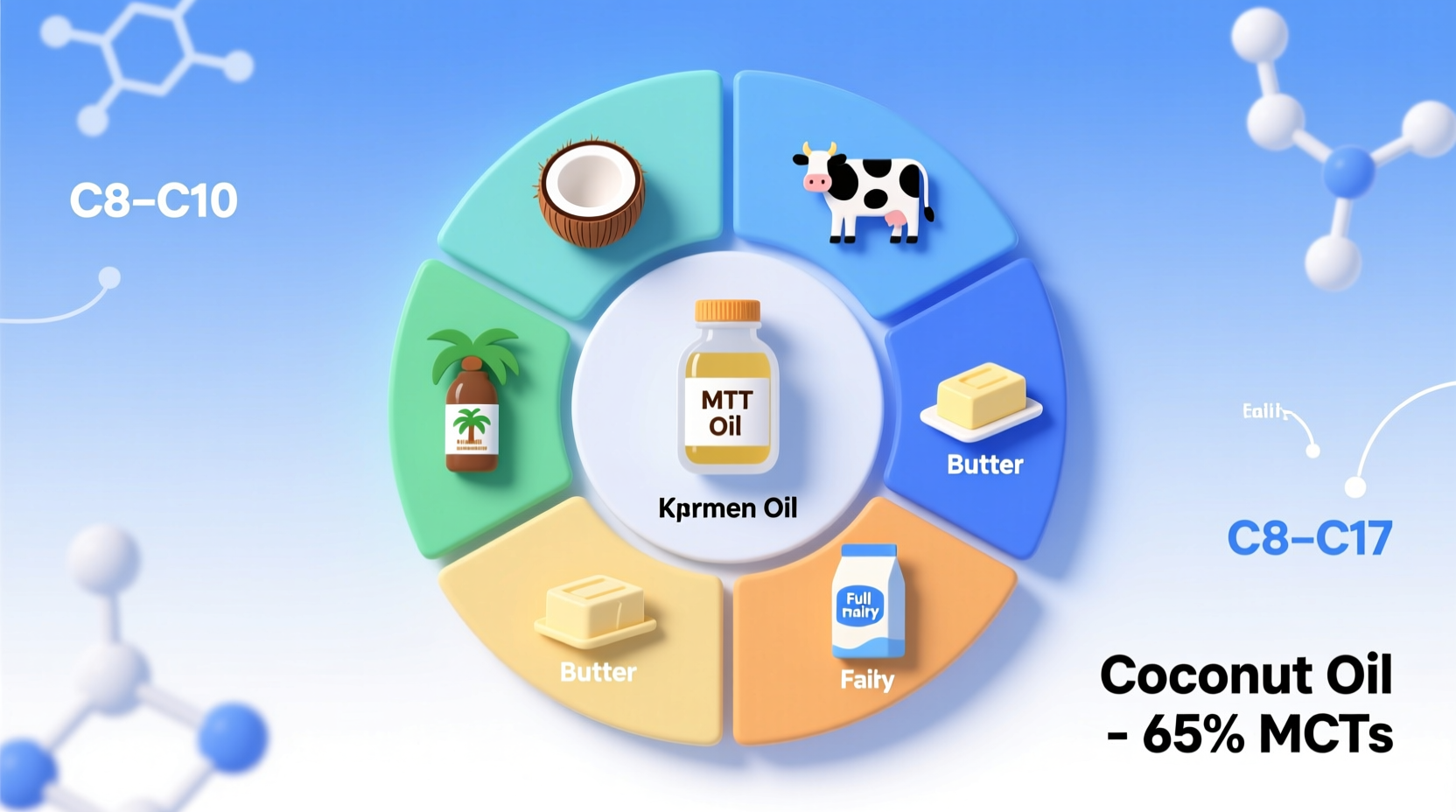If you're searching for what foods are high in MCT, you need clear, science-backed information to make informed dietary choices. Medium-chain triglycerides offer unique metabolic benefits compared to other fats, making them valuable for specific dietary approaches like keto, athletic performance, and cognitive support. This guide delivers exactly what you need: verified MCT content data from authoritative sources, practical incorporation strategies, and crucial context about food quality factors that affect MCT levels.
Top Foods Naturally Rich in MCTs
While MCT oil supplements dominate the market, several whole foods contain significant amounts of these beneficial fats. Understanding which foods provide the highest natural MCT concentrations helps you make strategic dietary choices without relying solely on processed supplements.
| Food Source | MCT Content | Primary MCT Types | Practical Serving Size |
|---|---|---|---|
| Coconut oil | 60-65% | Lauric acid (C12), Capric acid (C10) | 1-2 tablespoons daily |
| Palm kernel oil | ~50% | Lauric acid (C12) | 1-2 teaspoons (less common in Western diets) |
| Grass-fed butter | 10-15% | Caproic (C6), Caprylic (C8) | 1-2 tablespoons |
| Full-fat cheese | 10-12% | Caproic (C6), Caprylic (C8) | 1-2 ounces |
| Whole milk | 8-10% | Caproic (C6) | 1 cup |
Coconut: The Undisputed MCT Champion
Among natural foods high in MCT, coconut products reign supreme. The USDA FoodData Central database confirms that unrefined coconut oil contains 62.4% medium-chain fatty acids, predominantly lauric acid (C12), which converts to monolaurin in the body—a compound with documented antimicrobial properties according to research published in the Journal of Medicinal Food (2018).
When selecting coconut products for maximum MCT benefit:
- Choose virgin coconut oil over refined versions to preserve natural MCT composition
- Fresh coconut meat contains about 20% MCTs by fat content
- Coconut milk provides approximately 15-20% MCTs depending on concentration
- Avoid "light" coconut milk products which significantly reduce fat (and MCT) content

Dairy Sources: The Often Overlooked MCT Providers
Many people searching for what foods are high in MCT overlook dairy options. Full-fat dairy products from grass-fed animals contain valuable MCT percentages. According to data from the National Dairy Council, the MCT profile in dairy differs from coconut sources:
- Butter contains caproic (C6), caprylic (C8), and capric (C10) acids—shorter-chain MCTs that convert to ketones more rapidly than lauric acid
- Hard cheeses like cheddar and gouda concentrate MCTs during the aging process
- Whole milk provides MCTs along with complete protein and calcium, though in lower concentrations
Processing methods significantly impact MCT content. A 2020 study in the Journal of Dairy Science demonstrated that traditional fermentation processes used in yogurt and kefir production preserve MCT integrity better than ultra-pasteurization techniques.
Practical Incorporation Strategies
Knowing which foods contain MCTs is only half the equation—you need actionable ways to include them in your daily routine:
For Morning Energy Boost
Add 1 tablespoon of coconut oil to your coffee or tea (creates a creamy texture without dairy). This simple MCT-rich foods for keto diet strategy provides sustained morning energy without blood sugar spikes.
For Cooking Applications
Use coconut oil for medium-heat cooking (up to 350°F/175°C) where its high smoke point preserves MCT integrity. Substitute butter for coconut oil in baking recipes at a 3:4 ratio to maintain moisture while increasing MCT content.
For Snacking Solutions
Create MCT-boosted snacks by mixing unsweetened coconut flakes with dark chocolate chips and a touch of grass-fed butter. This delivers approximately 8 grams of MCTs per 2-ounce serving.
Critical Considerations for Maximum Benefit
Not all MCT-containing foods deliver equal benefits. Several factors affect the actual MCT content you consume:
- Processing methods: Refined coconut oil loses 5-8% of its natural MCT content compared to virgin varieties
- Animal diet: Grass-fed dairy contains 15-20% more MCTs than conventional dairy according to USDA Agricultural Research Service data
- Storage conditions: Exposure to light and heat degrades MCTs over time—store coconut oil in dark glass containers
- Individual tolerance: Start with small amounts (1 teaspoon) to assess digestive response before increasing intake
For those following therapeutic ketogenic protocols, focus on foods containing C8 (caprylic acid) and C10 (capric acid), which convert to ketones more efficiently than C12 (lauric acid). While coconut oil is highest in total MCTs, dairy products provide a better ratio of these shorter-chain MCTs.
Common Questions About MCT-Rich Foods
These frequently asked questions address practical concerns that arise when incorporating natural sources of MCT oil into your diet:











 浙公网安备
33010002000092号
浙公网安备
33010002000092号 浙B2-20120091-4
浙B2-20120091-4